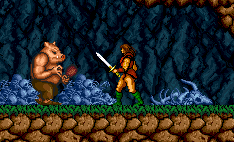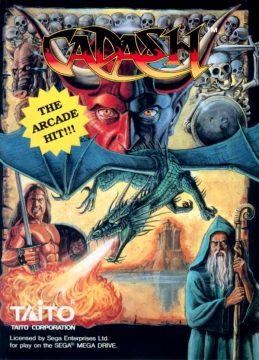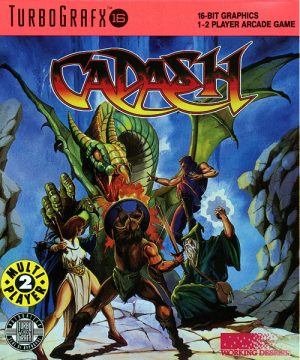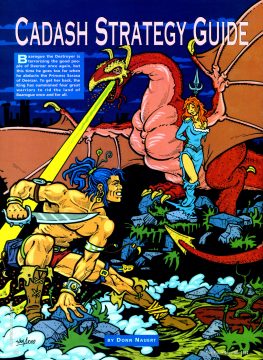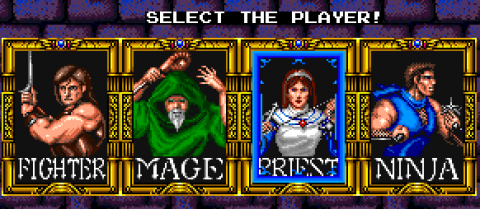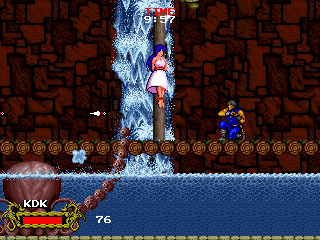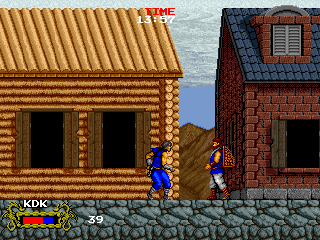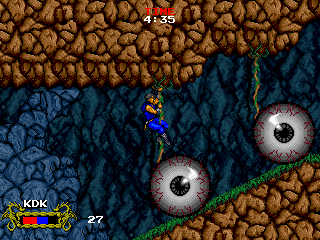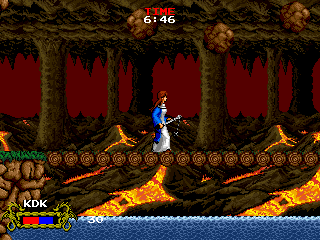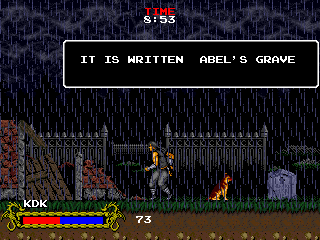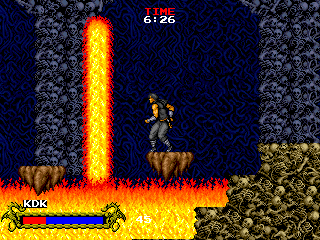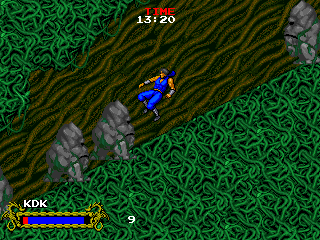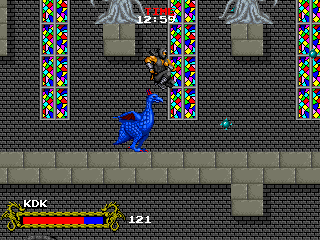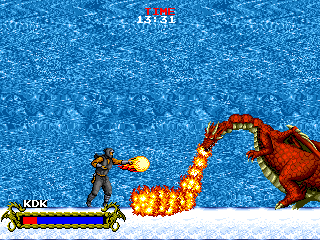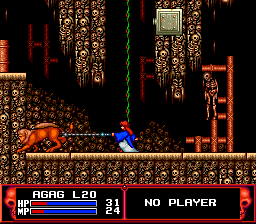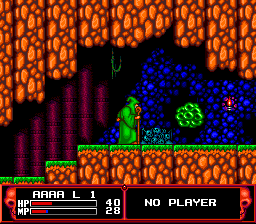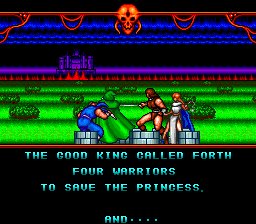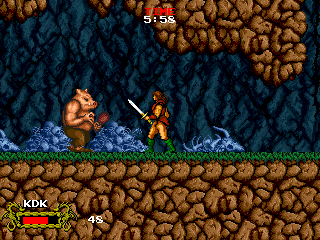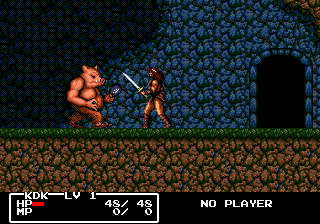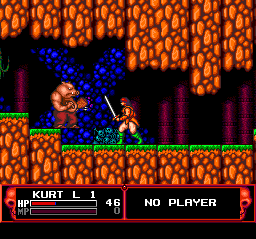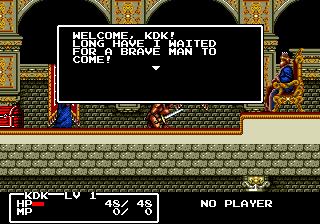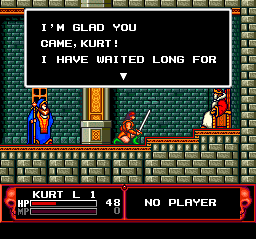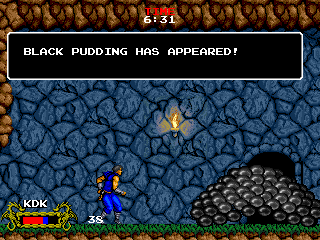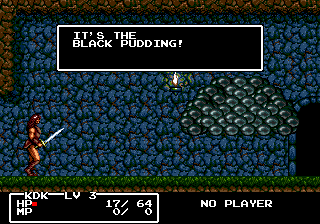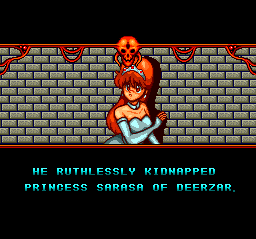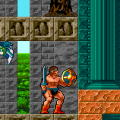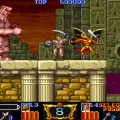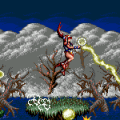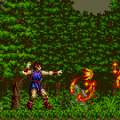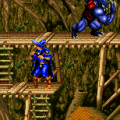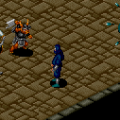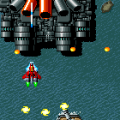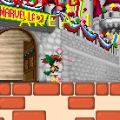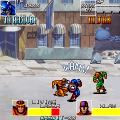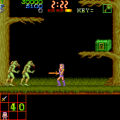It’s hard to underestimate the impact that Dragon Quest and Wizardry had on the Japanese video game landscape. Beyond the clones that flooded the Famicom marketplace, it also inspired other developers to integrate RPG elements into other genres. One of the most unusual places where these snuck into were arcade games, which were known for relatively short experiences as opposed to longform character building or storytelling. One of these titles is Taito’s Cadash, which not only melds RPG elements with an arcade action game, but also allows four people to play simultaneously.
The game begins as you pick from one of four character classes – Fighter, Mage, Priest or Ninja – then asks you to name them, using three letters, in the arcade version. You’re then introduced to the king of Deerzar, who gives his typical “help me!” speech. The kingdom is under assault by the evil Baarogue (a mistransliteration of Balrog), who has kidnapped the Princess Salassa and whisked her away to the underground kingdom of Cadash. After picking up a few pieces of weak equipment and chatting with the denizens of the castle, the warrior(s) begin their trek.
On a basic level, Cadash looks and feels a lot like Rastan, another fantasy action game from Taito. The characters are large and lumbering, and the stages are filled with climbable vines. However, the aesthetics are closer to Lords of the Rings than Conan the Barbarian. The major differentiation comes with the multiple player characters and their associated statistics.
Each character type plays differently. The fighter is the closest to the hero of Rastan, who wields a sword and can use a shield to block certain projectiles, but lacks magic. The wizard has a staff and a variety of offensive magic spells, which draw from a limited MP pool. The priest wields an extremely long reaching mace, and can also use healing and defense spells. The ninja is quick and can toss shurikens, but like the fighter, also lacks magic. Magic is a little difficult to use, as you need to hold down the attack button in order to cycle through your spells, then let go to cast them.
Killing enemies grants experience points, which will level you up and increase all of your stats, including your HP, strength and agility. Most enemies also drop gold, which can be used to purchase new weapons and assorted curative items whenever you happen upon a village. Each character is limited to specific sets of equipment, and their availability isn’t consistent throughout the whole game. For example, the first shop sells new weapons for the fighter, but nothing for the ninja. Similarly, each character has different experience requirements for gaining levels. New equipment affects your character’s appearance too – the shirtless, muscular fighter looks completely different by the end, once he’s equipped a helmet, a proper piece of armor, and a cooler sword.
There are five stages in total, but beyond the first one, they aren’t strictly linear. The levels are usually straightforward, but there are cases where you need to double back in order to complete a quest. For example, in the fourth stage, one of the last areas you come across is the town. Here you meet a woman who asks you to place a necklace on the grave of her dead husband, which is near the beginning of the stage. After backtracking (there’s a shortcut, thankfully) and accomplishing this, you’ll get an item which allows you to talk the dog you found earlier in the level, who in turn points you toward the level boss.
In fact, some of the little bits of dialogue and world building, sparse as they are, are rather charming. In the second stage, an old woman begs you to rescue her kidnapped adopted daughter, who is to be sacrified to the kraken in the underground caves. After rescuing her, it’s revealed that she’s actually a mermaid, and asks you not to share her secret with her foster mother. It’s not exactly literature, but in the context of an arcade game, where the storytelling expectations are basically zero, it helps expand the RPG elements beyond merely stat building.
For as novel as those RPG elements, though, they also cause the biggest problems in Cadash. You’re expected to grind and gain experience levels, otherwise you’ll be caught in situations where the screen is flooded with enemies that you’re too weak to destroy effectively. It’s less of a problem with multiple players, but as a single player, you’re going to be caught in situations where you either need to tediously grind or otherwise just credit feed. There’s also a timer, too, so you can’t spend too long just farming experience unless you want to get stalked by an invincible skull until you’re killed. If you need more time, there are items you can purchase to refill the clock a bit. It’s not exactly well balanced either, with the priest easily outshining her brethren, due to her overtly powerful weapons and healing magic. The Japanese version is balanced a little differently than the other versions, often proving easier.
There’s also the fact that, if you removed all of the RPG elements, Cadash would be a rather mediocre action game. The levels are expansive, but not all that interesting. There aren’t many sections with platforming obstacles, but the few that are present are painful, due to the short jumping range…unless, of course, you’ve leveled up your agility. Some situations prove irritating and potentially game ending, like if you run out of antidotes and get poisoned. The screen also gets really cluttered in multiplayer mode. It only supports two players per screen, so two cabinets need to be linked together. At least that means that four people don’t need to crowd the machine like most other four player games.
There’s still a certain novelty to Cadash. It’s not the only arcade game to feature RPG elements – there’s also Sega/Westone’s Wonder Boy in Monster Land and Namco’s Valkyrie no Densetsu. But those were not only much cutesier, but they abstracted the statistics to fairly simple levels. Cadash feels the closest to the medieval trappings of Dungeons and Dragons role-playing, both due to its high fantasy setting, and its character classing and multiplayer. It’s unbalanced and parts of it drag on too long, but it’s still a bold experiment, one that’s well worth playing.
Cadash was ported to two 16-bit platforms – the PC Engine/Turbografx-16, which was released in both Japan and North America, and the Genesis, which was exclusive to North America. Both are decent ports but offer assorted compromises. Four player support is gone, so only two can play at the same time. Both versions feature a black background behind the status bar, rather than being transparent. Both are also somewhat easier and better balanced, primarily because they can’t fit as many enemies on the screen at the same time, so you’re rarely overwhelmed. They’re also missing the time limit.
The Genesis version looks darker and grittier, but otherwise plays very accurately. Most of the levels are identical, except for the absence of the tentacled plant boss. This was a frustrating encounter and it is not missed. The arcade game typically only gave you a single life per credit, but there were two elixirs found throughout, which resurrected you. The Genesis version gives you a few elixirs per credit, effectively acting as extra lives. You also have a few credits to beat the game. The most unfortunate downside is that it’s totally missing the priest and the ninja classes, which is a particular blow considering how awesome the priest was.
The PCE/TG-16 version has brighter graphics, but ultimately doesn’t look quite as good as the Genesis port. The biggest plus is that it does have all four character classes. However, in the arcade version, each level was typically one large, multi-scrolling map. In this version, they’re broken up into smaller chunks with some changed layouts, so it’s not quite as accurate. The most maddening aspect is there are no extra elixirs beyond what was already in the arcade version. By default there are no continues either, but there is a secret code to give you a few. Entering certain character names will start you off at later parts of the game. This port also allows four spaces for names, rather than three in the other versions.
The English writing in the arcade version is quite bad, filled with typos, awkward grammar, and just plain silly phrasing, like the bombastic “was miraculously resurrected” whenever you continue. It’s only really a miracle if you consider inserting another credit to be an event of monumental importance. The message when your attacks are ineffective – “The weapon is not functioning!” – is also perplexing.
The Genesis version fixes up most of these to at least be less embarrassing, even though it keeps some odd terms. It also properly romanizes many of the names – “Balrog” instead of “Baarogue”, for example. The TG16 version was localized by Working Designs. The writing isn’t as good as their later efforts, but there are still some oddities, like the fourth wall breaking skeleton, a vague reference to Dr. Doolittle, and Carl Sagan being namedropped by the last boss. Still, their revised translation is definitely the best.
The only compilation Cadash appears on is the PC/Xbox version of Taito Legends 2, which is an emulation of the arcade game. The Xbox version was only released in Europe.
Screenshot Comparisons
